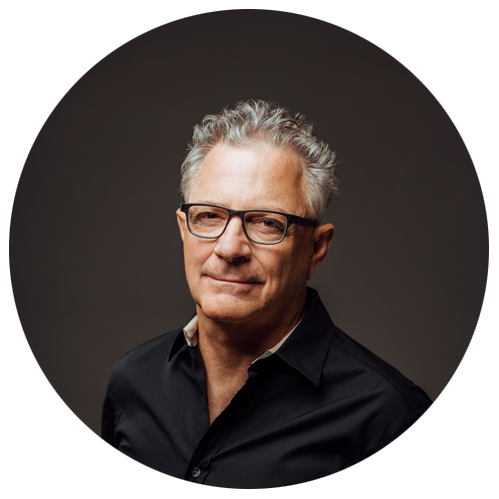Dream Tending — what does that even mean? When you first start reading about dreamwork through tending your dreams, it can feel like you’re reading in a foreign language. Even if you’re well-versed in the psychology of dreams, the concepts and terminology of Dream Tending can be confusing at first. A basic understanding of these important terms can help you understand the core concepts of Dream Tending and the theories behind the practice.
1. Dream Tending
Dream tending is more than a system for interpreting dreams. It’s a method of accessing the knowledge and wisdom hidden in dreams and using it to unlock creative potential and activate healing. More than that, though, dream tending is a way of living and interacting with the world.
At its most basic level, dream tending is a healing modality that can help us reconnect with our authentic selves, deal with challenges and read the messages sent by the subconscious. As we delve deeper into the practice of tending dreams, though, we come to recognize that we are tending to more than our own dreams—that the world, too, is dreaming and we hear those voices through the images of our personal dreams.
2. Animation
The most central skill in dream tending is that of animating dream images. We can best understand animation as part of a progression in the psychology of dreams and dreamwork: association, amplification and animation. Each of the three represents a deepening and expanding understanding of the meaning of the dream image. First, we associate a dream image with behaviors and feelings drawn from our personal experience and history. When we amplify, we expand our understanding of the dream image by exploring its appearance as an archetype in myths, stories, paintings and other forms of cultural expression, both classical and contemporary. Animating the dream image involves imagining the figure in the here and now, present in the room beside you like an animated figure from a movie so that you can see it, touch it, talk to it and interact with it. In the book Dream Tending: Awakening to the Healing Power of Dreams, Dr. Stephen Aizenstat offers practical advice, exercises and tips that even novices to dreamwork can use to help them step into the practice of dream tending.
3. The Living Dream
A central tenet of dream tending is that dreams are alive. In other methods of dreamwork, dreams are static images, stories that have been written down, images that have been painted. We study them in their fixed form, trying to puzzle out the meaning of the various symbols and figures that appear in them. In Dream Tending, we bring the dream to life around us and enter its living world. There, we can engage with the dream images, speak with them, observe them, ask them questions and, ultimately, befriend and care for them. By embracing the vitality of the living dream, we get to know, more deeply, the healing potential of the image and experience how they care for us as we, in turn, care for them.
4. Animal Body
When Aizenstat speaks of working from his “animal body,” he is referring to the necessity of getting the ego—the rational, thinking mind—out of the way, and tending the dream from your full embodied presence. The rational mind, in its quest to analyze and understand, makes it harder, if not impossible, to do that. The moment you start analyzing and trying to figure out “what does this dream mean?” you are disengaging from the living dream and standing outside it. To meet dreams where they live, you must learn to enter the dream and leave your inner analyst behind.
5. Archetypal Ego
The archetypal ego is Aizenstat’s term for the true, authentic self—who you are at the center of your being. To truly engage in your dreams, you need to be able to connect with your archetypal ego and sustain that connection as you interact with your dreams. In Dream Tending, Aizenstat notes that contacting your archetypal ego is “easier to understand conceptually than to actually do,” and provides a series of exercises to that help you connect with your authentic self, the part of you that can step into your dream landscape and engage with the dreaming world.
6. Core Questions
The core questions are two simple questions that unlock the secrets and symbols of the dreaming world. They are “Who is visiting now?” and “What is happening here?” The phrasing of those questions is important; they aren’t asking why or attempting to analyze. They are openly curious questions that invite you to observe rather than investigate, pay attention rather than attempt to make sense of things. In that way, you stay centered in the dream and allow the dream images to introduce themselves to you and let you know what they want to tell you.
7. The Ensouled World
The ensouled world is a way to recognize that we live in a world that is not only full of living things, but alive itself. Dream Tending teaches that the world is a place alive with soul, and in order to live full, rich and meaningful lives, we must live as if every rock, animal, tree and stream is alive as well. This is an idea that was common among our ancestors and is still common among many indigenous people. Dream Tending recognizes our need for connection with the world around us—not just the humans but the earth and the animals, the oceans and the mountains that are a part of our world, as we are a part of their world.
8. Indigenous Image
Beyond the concept of personal and collective archetypes, Aizenstat also recognizes a deeper type of archetype: images that seem to carry a relevance beyond the cultural level. He named these indigenous images, images arising not from human culture, but from our essential nature. These indigenous images, he postulates, reflect the intention that Nature has for each of us, and they have the capacity to heal us and help us recover our balance when we’ve strayed from our true purpose. Connecting with an indigenous image serves a deeper purpose as well — it feeds the World’s Dream, the planetary landscape where all our dreams connect and interact with each other.
9. Archetypal Activism
If the world and everything in it have their own souls, their own inner lives and their own desires, then our dreams provide a portal for the world itself to connect with us and tell us what it needs. When we listen to the world around us, we can move in concert with it and with others who are similarly attuned. By taking the time to listen and understand our essential nature and mission, we can act and interact in the world in a way that promotes healing and leads us to a deeper understanding of the world and each other.
There’s far more to Dream Tending beyond these essential terms, but as a whole, they lay out the concepts of Dream Tending in broad strokes. Filling in the details between those strokes is a life’s work, but it’s work that offers the rich rewards of living a fulfilled and purposeful life.
Written by Deb Powers
Deb Powers is a freelance writer who has studied and written extensively about archetypal images, dreams and metaphysical subjects. Her self-published tarot deck focuses on using tarot images and concepts for self-empowerment, problem-solving and personal growth.
References:
- Dream Tending: Awakening to the Healing Power of Dreams by Stephen Aizenstat, Ph.D.

Stephen Aizenstat
Stephen Aizenstat, Ph.D., is the founder of Dream Tending, Pacifica Graduate Institute, and the Academy of Imaginal Arts and Sciences. He is a world-renowned professor of depth psychology, an imagination specialist, and an innovator. He has served as an organizational consultant to major companies and institutions, and as a depth psychological content advisor to Hollywood film makers. He has lectured extensively in the U.S., Asia, and Europe. He is affiliated with the Earth Charter International project through the United Nations, where he has spoken. Professor Aizenstat is the Chancellor Emeritus and Founding President of Pacifica Graduate Institute. He has collaborated with many notable masters in the field including Joseph Campbell, James Hillman, Marion Woodman, and Robert Johnson.
Unleash your creativity and innate genius
Learn the Power, Purpose and Intelligence of Dreams
Improve the quality of your relationships, discover your authentic life purpose and improve your emotional and physical health with the Dream Tending Academy.
Free e-book download
For over 40 years, I have devoted my life to understanding the profound wisdom and healing power that exists within each of us. I am excited to share my latest e-book that showcases how to tap into your dream state through the powerful applications of creativity and innovation. By following my groundbreaking methods and techniques, you will discover how to unlock your creative potential, increase your emotional and intellectual bandwidth, and realize your personal and professional goals. Download my e-book and unlock the secrets of your dreams and deep imagination!








